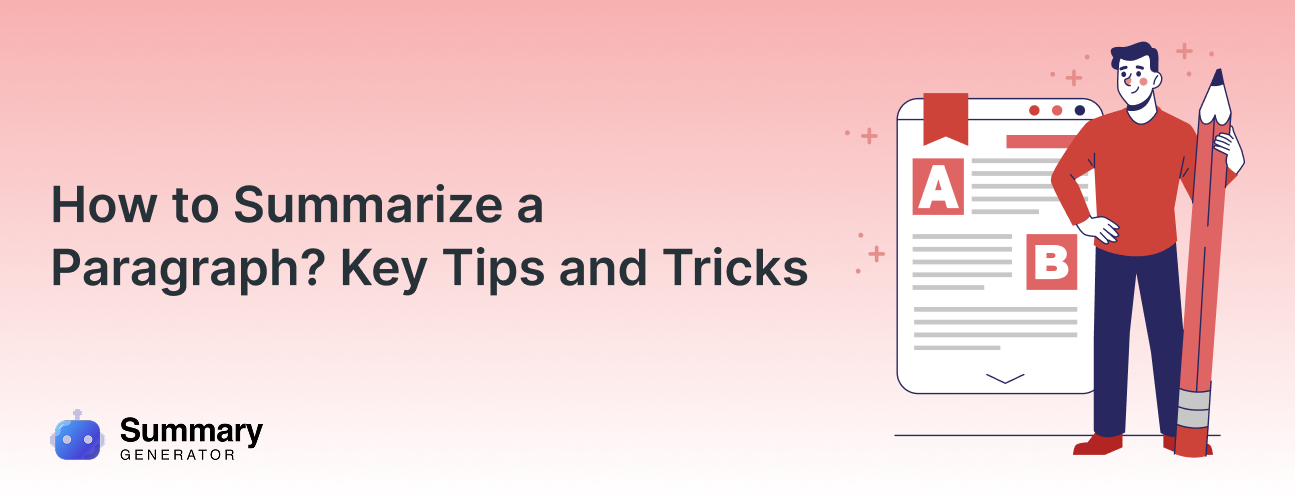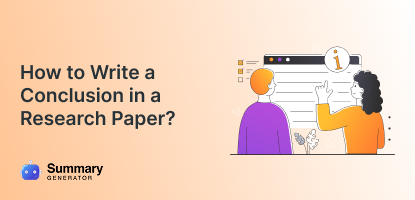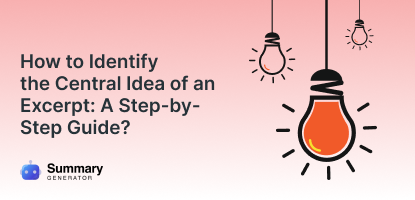Summarizing a paragraph means converting a lengthy paragraph to a short version with only the main ideas. Removing the unnecessary details helps to convey the message in fewer words.
This important technique is utilized in various fields to improve reading and writing abilities. A condensed version of the text covers only the most important points as it represents all the information concisely. It is like reading an overview of an extensive text without having to go through all the details.
In this blog, we will discuss all the important aspects of this technique, along with important tips and tricks. So, come along!
What is Paragraph Summarization?
According to the Oxford Learner’s Dictionary, a summary is “a short statement that gives only the main points of something, not the details.” It is a short text that extracts the essence of a lengthy text or document.
In simple words, a summary is a short version of a story, book, essay, research paper, report, etc. This technique also extracts important information from a chapter, a small section, or a single passage.
If we specifically talk about summarizing a paragraph, it is the same as summarizing any type of text. The goal is the same: creating a short, brief text that depicts the key context of the text.
Purpose of Summarizing
A summary may have multiple purposes. It is commonly used in academics and professional environments to get an overview of material. This technique is effective for researchers because it saves time reading the whole document. It also provides insights about a text without reading it.
With excellent summarization skills, you can:
- Condense a range of information
- Give readers key takeaways from the most important parts of the text
- provides a basic understanding of any document
How to Summarize a Paragraph?
Summarizing a passage seems challenging at first. However, with the proper technique, you can ace it. Here is a step-by-step guide to help you.
Understand the Text
Start by carefully reading the material you want to summarize. Read the text thoroughly to ensure you understand the overall message and key points. Take your time and reread any difficult sections to ensure full comprehension.
Identify the Main Idea
Once you understand the text, determine the core theme or main point. This central message is important for your summary. It will guide you and prevent your passage from becoming too detailed or off-topic.
Create an Outline
Before starting the writing process, create a brief outline. This structured approach helps organize your thoughts and connect the main ideas. Focus on the key points without worrying about perfect wording at this stage.
Write the Summary
Use your outline to write in clear and concise language. Focus on the key points you identified earlier. Remember, the final output should be shorter than the original text. Each sentence should be concise and to the point. Avoid personal opinions or interpretations.
Revise and Edit
After writing the summary, review it carefully. Check for clarity, coherence, and conciseness. Also, make sure the main idea and key arguments are presented clearly. Look for any unnecessary details or areas where you can simplify the language.
Get Help from Digital Tools
If you need an instant summary, consider using an effective tool to generate summaries. Such tools are built to extract key points and generate an outline quickly. You can add the text to the tool and summarize it quickly.
Dos and Don’ts of Effective Summarization
A good summary effectively restates the main points and overall purpose of the content. Here’s a guide to help you write a strong conclusion
Dos
- Always start with a clear, concise, and strong opening sentence. Such an opening will immediately provide context for the summary.
- Keep the summary brief and focused. Summarize the key arguments and evidence without unnecessary details or repetition.
- Use the thesis statement of the paragraph as a guide. Your passage should directly support and reinforce your main argument.
- Adding strong, active verbs in the brief will make your summary more engaging and impactful.
- Maintain a positive and confident tone throughout the paragraph. End on a note of conviction and leave a lasting impression on the reader.
Don’ts
Here is a list of things to avoid while summarizing a passage.
- Do not overuse certain phrases. Avoid clichés like “in conclusion,” “to summarize,” “in summary,” or “to conclude.” These phrases are redundant and detract from the impact of your summary.
- Never introduce new information that is not mentioned in the passage. The summary should only reiterate previously discussed points. So, avoid introducing new ideas or arguments.
- Keep your language concise and to the point. Avoid repeating information or using unnecessary jargon.
- Maintain a confident and authoritative tone. Avoid phrases like “I may have missed some points” or “This is just a brief overview.”
Example of Paragraph Summary
In this section, we will be showing you an example of a summarized passage.
Passage:
The rise of fast fashion has led to overconsumption. Consumers are constantly bombarded with new styles and trends through social media that encourage them to buy more than they need. Brands drive this phenomenon by releasing new items at a shocking speed for the sake of increasing revenue. As a result, many people collect vast amounts of clothing (wearing items only a few times before discarding). This cycle contributes to a throwaway culture and has serious environmental implications. The production and disposal of these garments cause increased waste and pollution. The appeal of affordable, trendy clothing is hard to resist. However, it is essential to recognize the long-term consequences of such consumption on our wallets and the planet.
Summary:
Fast fashion is causing overconsumption as consumers are intrigued to buy new styles and trends. This cycle contributes to a throwaway culture and has serious environmental implications, including increased waste and pollution. Therefore, it is important to recognize the long-term consequences of this habit.
To Sum Up
Summarizing a paragraph is a vital method for concisely conveying a message or piece of information. This technique provides the most important data in the least amount of time. Although converting an extensive passage into a short text is daunting, you can achieve this with the right techniques. The best way to get a concise summary is to use the AI summarizer. With this tool, you will get a summary without the need to go through all the steps.



